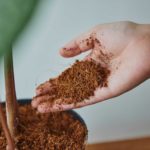It’s Wise to Get the Dirt on Potting Soil Mixes
Houseplants need a good place to set down roots. A healthy soil that fits each plant is the key to a lush indoor garden. Most houseplants grow best in rich, well-drained soil. The mix should be porous for root aeration and drainage, and able to retain moisture and nutrients. Many blends contain perlite or pumice as a draining agent and peat moss to hold moisture and soil fertility.
Potting soil formulations vary. It is best to read the package contents so that you can choose a high-quality soil that fits your plants’ needs. For optimum growth, some houseplants require specific ingredients in their soil.
Here are some specific soil mixes
African violets and other flowering houseplants: Blooming plants generally thrive in a mix containing organic water-holding materials like peat moss and compost. Mixes with these ingredients tend to keep flowers and buds constantly moist, which prevents bud drop. Make your own by blending 1 part peat moss, 1 part vermiculite, 2 parts perlite, 1 part worm compost and a small amount of horticultural charcoal.
Cacti and succulents: As desert plants, cacti and succulents require a much different mix than your average houseplant. Cacti planted in your standard mix — even one with good drainage — will probably rot. With a cactus mix, your goal is to mimic the same conditions you find in the desert, which means very fast drainage and high alkalinity. You can get a prepackaged cactus mix, or mix your own, which should include 2 parts worm castings or regular compost, 1 part coarse, horticultural sand and 1 part calcined clay or 1/4-inch lava pebbles, which will provide especially sharp drainage. In 4 quarts of this mix, add 2 tablespoons dolomitic lime (to create alkaline conditions) and 1/3 cup charcoal, which will sweeten the soil and reduce odor.
Orchids: Because they are epiphytic, naturally growing on other plants for support with their roots exposed to the air rather than in soil, orchids should be grown in orchid bark instead of traditional potting soil. Such mixes are composed of a coarse blend of bark chips — often fir and pine.
When to Repot: Most houseplants do best in soil that is slightly acidic. Soil mixes generally start out on the acid side, but are likely to become alkaline over time, especially if your water is alkaline. Fertilizers can also cause soil alkalinity. If a plant’s growth becomes stunted and weak and it has been some time since you’ve repotted, it’s probably a good idea to do so.





